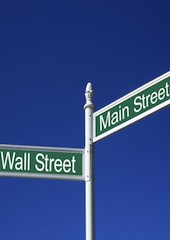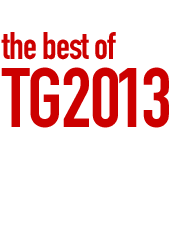A Tale of Three Americas
Examining the effects of the U.S. division into Main Street, Wall Street and Washington.
December 30, 2013

Julius Caesar’s treatise on the war that the Roman Empire fought against the Gauls famously starts with the words: “All Gaul is divided into three parts.” The same is true for the United States of America today.
In contrast to Caesar’s division of what is today known as France, which went along ethnic lines (Belgians, Celts and Gauls), America’s division today splits the country into the disjointed politics in Washington, the real economy on Main Street and the return to old glory on Wall Street.
Trouble in Washington
The dysfunction on the inside of the Washington Beltway by now has gone from the ridiculous to the absurd. Elected federal politicians that get paid with taxpayers’ dollars continue to ignore the business of governing while nobody holds them to account for anything. They are mainly busy with raising campaign funds for re-election.
Meanwhile, President Obama’s White House is stumbling from one scandal to the next. Admissions of excessive NSA surveillance of U.S. citizens and foreign leaders are chased by the disastrous launch of “Obamacare”. What will be the next fumble?
Last month, Mr. Obama’s approval rating in year five of his presidency fell to below 40% and to the same level as George W. Bush’s was at the equivalent point in his tenure (in November 2005). The President’s only solace in this could possibly come from the fact that 39% is still a whole lot better than the 9% that Congress is getting these days.
Slow recovery and a nation of tenants
As Washington is stuck in a high stakes poker game between elephants and donkeys, the real U.S. economy displays difficulties of its own. Statistically, the Wall Street-induced Great Recession has been over for four years, but the economy is still recovering.
This most sluggish of recoveries also comes with a U.S. labor participation rate that sits at less than 63%, the lowest level since 1978. More than a third of the U.S. population that could technically be working is not. They either dropped out of the workforce permanently, or they haven’t started entering it because there are no jobs and would rather stay in school.
The drop in labor market participation marks the flip side of the relatively stable official unemployment rate at or above 7.0%. As the participation rate shows us, the unemployment rate dropping from the record highs of 2009 is not an indication of more jobs, but of more folks staying out of the workforce. That is troublesome.
Job creation in America is not just slower than expected. The jobs that are being created often come with fewer hours and a lesser wage. The recovery is agonizingly slow, both quantitatively and qualitatively.
Today, people with poorer quality jobs are spending their hard earned money to reduce their credit card balances which is good for their credit rating but bad for an economy where consumer spending accounts for over 70% of output.
Less easily available credit is also one of the root causes why the United States is slowly turning from a society where the majority of families own their homes to one where the majority are tenants.
At near record-low prices for single and multi-family residences, this situation benefits a new generation of landlords that are picking up deals of the century to rent apartments at rates dictated by limited supply and growing demand.
Wall Street is back!
The contrast to a broken political system and a struggling real economy can be found on Wall Street these days. Mega-IPOs and mergers are back and with them the bonuses for those investment bankers that survived the recession purge.
U.S. corporations have cleaned up their balance sheets and used the recovery to improve corporate earnings. This is the stuff that markets like.
While the economy overall is still struggling with job creation and solid growth, the Federal Reserve’s generous quantitative easing and asset purchasing program made sure that there is enough liquidity around to make sure Wall Street could enjoy an almost magical recovery before anybody else.
The idea was that a fast recovery on Wall Street would eventually trickle down into the real economy, create new jobs and get GDP growth back to the 3-4% that everybody wants to see.
The reality is that the few with the means to invest in the markets are enjoying incremental wealth from the Dow Jones at record levels. Meanwhile, the many stuck in their daily struggles of getting by are still waiting for better jobs and more opportunity.
We are also likely to see a continuation of the erosion of the American middle class. The silver lining for those that still have money left in their 401k plans will be that the bulls keep roaming on Wall Street and whatever their retirement plans are invested in will help growing their nest egg.
Takeaways
The United States is turning from a society where most families own their homes to one where most are tenants.
The Federal Reserve made sure Wall Street could enjoy an almost magical recovery before anybody else.
The reality is that the few with the means to invest in the markets are enjoying the Dow Jones’s record levels.
We are also likely to see a continuation of the erosion of the American middle class.
Read previous

The Globalist’s Top Books of 2013
December 29, 2013
